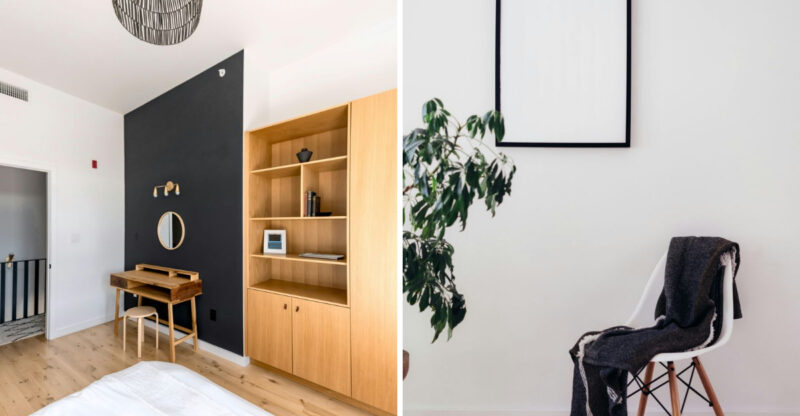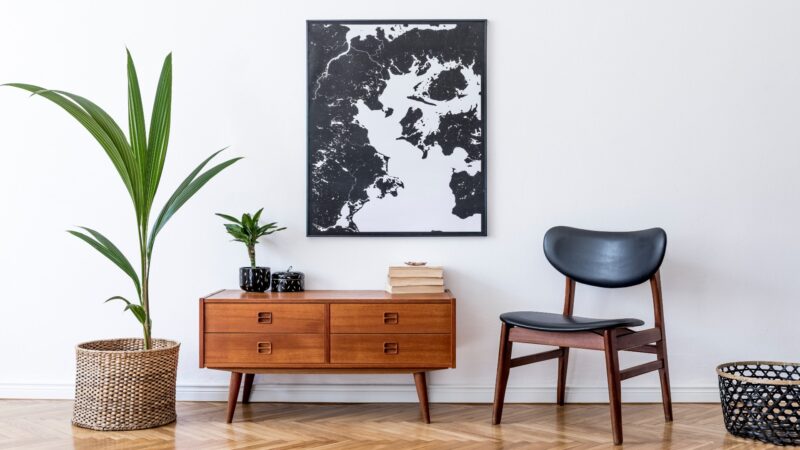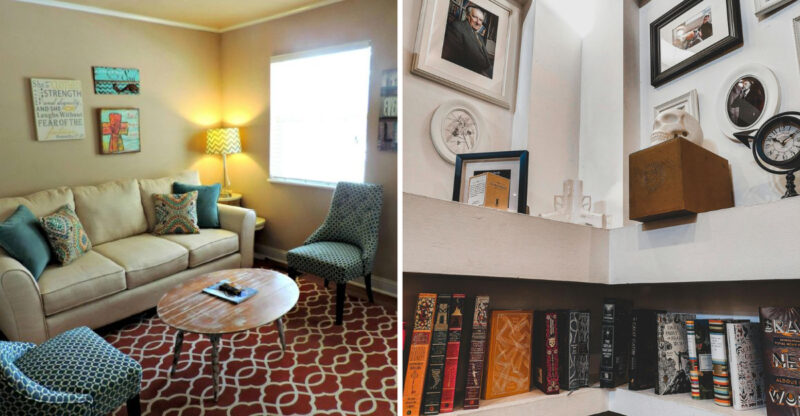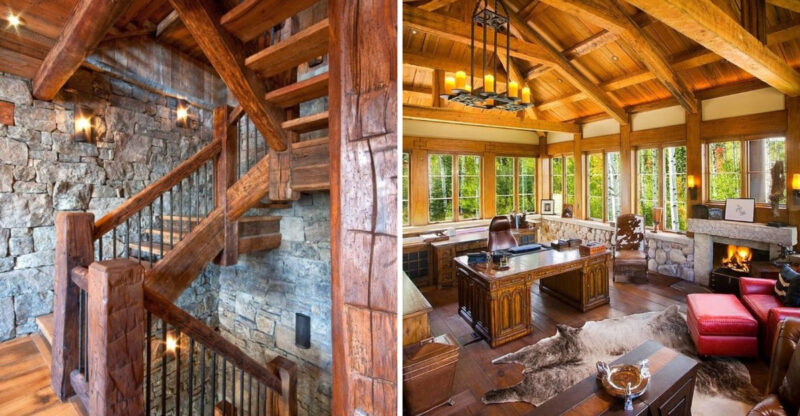8 Items Boomers May Keep That Are Only Gathering Dust

Walking into a Baby Boomer’s home often feels like stepping into a time capsule filled with furniture from decades past. Many hold onto these pieces out of nostalgia, sentiment, or simply the ‘I might need it someday’ mindset.
Yet these once-treasured items now sit unused, collecting dust and taking up valuable space that could be refreshed with more practical or modern alternatives.
Keep in mind, every household is different, and the decision to keep or replace items depends on personal attachment, lifestyle, and space considerations.
1. Faded Sofas
Those once-plush sofas from the 80s and 90s have seen better days. The patterns that were once the height of fashion floral prints, southwestern designs, or bold plaids now look painfully dated against modern minimalist trends.
Sun exposure near windows has created uneven fading, turning vibrant colors into washed-out shadows of their former glory. Cushions have lost their bounce, creating uncomfortable dips where countless guests have sat during holiday gatherings and family movie nights.
Despite their deteriorating condition, many Boomers keep these sofas covered with plastic or decorative throws. They represent an investment from when furniture was expected to last decades, not just a few years like today’s disposable pieces.
2. Old Coffee Tables
Dark, heavy wooden coffee tables were once the centerpiece of every living room. These bulky pieces often feature ornate details carved legs, intricate edges, or glass inserts styles that clash dramatically with today’s lighter aesthetic preferences.
The surfaces typically show their age with water rings from countless drinks, scratches from decades of use, and a patina that no amount of polish can fully restore. Many have a lower shelf or drawers stuffed with ancient magazines, TV guides, or remote controls for devices long since replaced.
While younger generations prefer sleek, multifunctional pieces, Boomers often keep these tables out of practicality. After all, where else would they display their collection of coasters and coffee table books that nobody ever reads?
3. Outdated Bookcases
Towering dark wood bookcases line the walls of many Boomer homes, relics from an era when physical book collections were status symbols. These imposing structures often feature glass doors that stick or tracks filled with decades of dust.
The shelves sag slightly in the middle under the weight of hardcover encyclopedias that haven’t been opened since Wikipedia became a thing. Complete sets of Reader’s Digest condensed books and matching classic novels with gold-embossed spines create an impressive but rarely disturbed display.
Younger generations might wonder why anyone needs these hulking storage units when e-readers can hold thousands of books in a device smaller than a paperback. But for many Boomers, the idea of downsizing these literary showcases feels like erasing a lifetime of intellectual achievement and cherished reading memories.
4. Stacked Chairs
In garages and spare rooms across America, folding chairs and extra dining seats stand in dusty formations, waiting for gatherings that happen less frequently than their owners anticipate. Some are vintage metal folding chairs with vinyl seats in harvest gold or avocado green, preserved from the 1970s “just in case.”
Others are mismatched wooden chairs rescued from various sets over the years, creating an eclectic collection that only emerges for the largest family holidays. The seats might be slightly uneven, requiring guests to choose carefully or risk a wobbly dining experience.
While younger generations might rent chairs for occasional large gatherings, Boomers find comfort in ownership and preparedness. The thought of not having enough seating for potential visitors seems more troublesome than dedicating storage space to these rarely-used items.
5. Heavy Cabinets
Entertainment centers and china cabinets from the 1970s and 80s dominate living and dining spaces with their imposing bulk. These massive wooden structures were designed for tube televisions, stereo systems with separate components, and complete sets of formal dinnerware used only on special occasions.
Glass doors might be slightly misaligned after decades of opening and closing, and interior lighting features often no longer function. The TV compartment stands empty or repurposed since flat screens moved to walls, while curio sections display collections of figurines, commemorative plates, or crystal serving pieces that younger generations have little interest in inheriting.
Moving these pieces requires professional help, which partly explains their continued presence. Their size and weight make them difficult to donate, and their outdated style yields little resale value leaving them to occupy prime real estate in homes that could benefit from more open space.
6. Old TV Stands
Before wall-mounting became standard, televisions required substantial furniture support. These specialized stands feature swivel tops, media storage compartments, and heavy construction designed to prevent tipping of bulky CRT sets that weighed as much as small refrigerators.
Many now serve purposes far from their original intent holding plants, family photos, or smaller modern electronics that look comically diminutive on surfaces designed for much larger equipment. The VHS tape storage areas remain empty or repurposed, and cable management holes in the back now lead nowhere.
While clearly obsolete, these pieces often remain because they’re perfectly functional as generic storage. Plus, getting rid of solid wood furniture feels wasteful to a generation that values durability and practicality over current trends. The fact that no one wants to help move these awkwardly heavy items also contributes to their longevity.
7. Worn Armchairs
Remember that armchair where Dad watched countless football games? The one with permanent indentations from years of sitting in the same spot? These faithful old seats often become relegated to spare rooms or basements when newer, more supportive options arrive.
The fabric has probably faded in patches, with mysterious stains that nobody talks about anymore. Springs might poke through in places, carefully covered with throw pillows or blankets.
Though they served families well through decades of TV dinners and lazy Sunday afternoons, these chairs rarely match current décor. Still, many Boomers can’t bear to part with them they’re not just furniture but vessels of family memories.
8. Chipped Side Tables
Hidden in corners of Boomer homes, these forgotten furniture pieces once proudly displayed family photos and decorative lamps. Now they bear the battle scars of countless household moves, grandchildren visits, and the occasional vacuum cleaner collision.
Veneer peels at the edges, revealing the less expensive wood beneath the surface. The finish has worn away in spots where drinks were set without coasters, leaving permanent rings that tell stories of parties long past.
Most have become catchalls for miscellaneous items reading glasses, old mail, and TV remotes. Yet despite their deteriorating condition, these tables remain, partly because their odd heights or unusual dimensions make them difficult to replace with modern alternatives, and partly because of the memories they hold.






